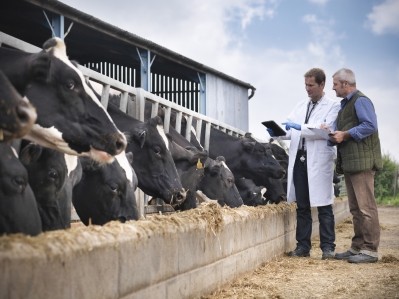Opinion
Face your fears over warehouse automation

Despite the apparent advantages of the technology, there is a clear reluctance among food business to go all-in on automation.
“This is perhaps unsurprising – there are few of the well-known names that haven’t experienced some sort of technology-driven crisis over the past decade or two,” said Invar sales and marketing director Dan Migliozzi.
“Not infrequently these have left the business section for the front page, leading not just to missed sales and unhappy consumers, but to panicked shareholders, questions in Parliament, and ‘thoughtful’ op-ed pieces in the media. More often than not, the ‘solution’ has been to side-line the tech and flood the warehouse with people.”
However, from Invars’ experience, it has rarely been fundamental issues with the hardware and software that have been to blame for these crises. Rather, the issues lie around timescales, complexity and over ambition, and a lack of forward vision.
Fear of missing out
“Major investment decisions appear to have been driven by a combination of FOMO – fear of missing out – on what the competition is thought to be doing, and the understandable desire of owners, whether public shareholders or private finance, to ‘sweat the assets’,” Migliozzi continued.
“Neither of these are sound foundations for the serious investment in advanced technologies that the sector undoubtedly needs.
“Paradoxically for such a fast-moving environment, our first piece of advice would be to slow down a bit. Take the time to think ahead. However fast the implementation of technology, it may well not outpace transformations in the industry – think how quickly home delivery moved from being a niche ‘inside the M25’ offer to being core business in the Highlands and Islands.”
When contemplating how best to implement a new automated system into your business, Migliozzi suggests starting small. Instead of going for a simultaneous, company-wide approach, perhaps start with a large-scale pilot across a single distribution centre, a particular class or sku, or particular channel.
This way you can not only find out if the chosen automation is really appropriate, but whether you have truly captured the reality of how your business works, or should work, in practice.
Long term projects
“This may mean that some of the potential efficiencies and savings are not immediately captured, but these are by definition long term projects,” Migliozzi added. “If this scale of investment is really the answer to today’s problems, there are probably deeper issues at play.
“The business needs to look out as far as it can, with the best forecasts (or range of forecasts) available. This automation is supposed to make the company more successful – so what does ‘success’ look like, not next quarter but in five years’ time?”
With change the only certainty that businesses can rely on, extra thought needs to be put into how flexible, adaptable and scalable the solution you are proposing is. Do you need a higher level of ‘robotics’, broadly defined, to meet a largely unknown future, or is it appropriate, simply to opt for significantly over-specified fixed automation?
“There is a lot of detailed ‘what if?’ thinking to be done – what if, for example, demands for less packaging lead to more loose goods being handled?” questioned Migliozzi. “That might steer the project towards a greater use of robotics for item-level manipulation, rather than fixed automation at a carton or pallet level.
Challenging assumptions
“There are also assumptions to be challenged – it may be that the automation plan expects suppliers to deliver in a certain manner. Actually, they don’t but that’s alright because the workforce knows the work round. The automation probably doesn’t. The automation has to be designed around the supply realities, but equally the suppliers have to be aligned with the automation.”
While businesses are advised to plan ahead as much as possible, Migliozzi warned that there may come a time when it is desirable to replace at least some elements of the automation years before its theoretical end of life.
Fixed automation, or automated storage and retrieval systems, may be a valuable interim solution to be augmented or replaced a few years down the line by autonomous mobile robots (cobots) working alongside staff, or whatever else technical progress brings forward.
“The food chain is always under huge pressure – consumers, media, shareholders, suppliers, and often with an added political element,” Migliozzi concluded. “To meet these pressures, the food distribution chain needs to rediscover its appetite for risk.”
Meanwhile,

















